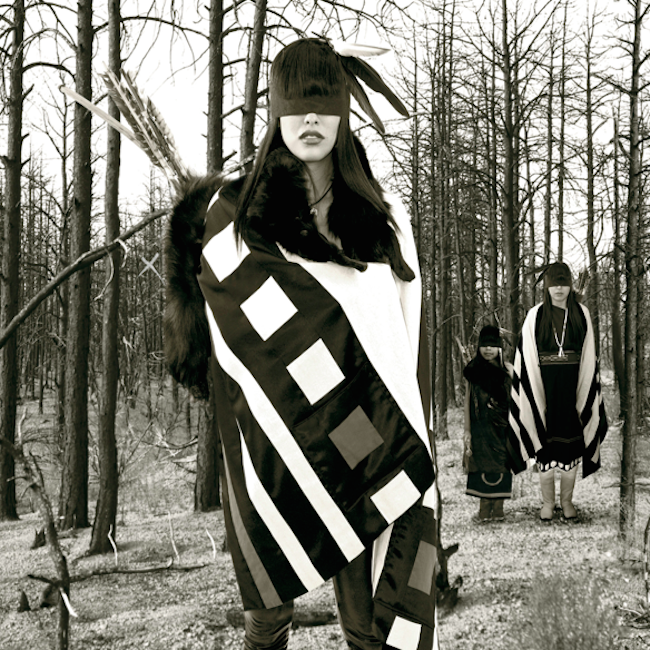In the late 19th century a traveling circus visited the Cochiti Pueblo in New Mexico. The arrival of this community was the most exotic event in the village’s history, exposing them to Siamese twins, bearded ladies and the like. It had a strong influence on the making of figures and Cochiti was and remains the leading Pueblo in figurative ceramics.

Today that circus is, metaphorically speaking, owned by Virgil Ortiz, arguably the most popular and widely known Native artist, not just in America but abroad as well. He began his career in his mid-teens making pots and figures. Shyly charismatic, with a strong sense of theater, he soon acquired a following made all the more distinctive by always traveling with an entourage of young Native artists (dancers, painters, ceramists, designers) he was supporting, encouraging or with whom he was collaborating.

I like the metaphor of a circus for his career for many reasons. First, I am a huge fan of this activity. Minus animals, it remains the most visceral of the performing arts, loaded with high-skill risk and bravura. It is muskily erotic, sweaty, pungent, and remains the most real and populist of entertainments.
Ortiz’s version has many rings: ceramic art, fashion and design, graphic art and photography, and performance. His influences range from historical Indian art to tattoos, biker gang costumes with a dash of BDSM and homoeroticism. And unlike some artists who are careful to separate the more obviously commercial realm from ‘high’ art, he throws them together under the same tent. The result is subversively effective.

Virgil Ortiz Made In Native America® Denver Art Museum Revolt 1680 – 2180

As the polymath ringmaster he blends all aspects of his creativity together in a way that one specialty enhances another. The fear is that by combining high and low aesthetics, the sacred with the profane, art suffers. That has not happened. If anything his approach is prescient at a time when cultural commentators are predicting, with good reason, that the “artist” as we have known it, is about to be replaced by a new animal, a creative entrepreneur without boundaries.

This all came together in an exhibition Revolt 1680/2180: Virgil Ortiz at the Denver Art Museum (through May 1) with 31 figurative ceramic sculptures, 23 of which are promised gifts, contemporary art that explores historic events with futuristic elements.

REVOLT 1680-2180 Virgil Ortiz, Vicki and Kent Logan Gallery May 17-Jan 3 2016
The exhibition is set against Ortiz’s huge graphic murals, inviting visitors to immerse themselves in a storyline that Ortiz has partly documented and partly created about survival, self-determination and empowerment. The story begins with the historic Pueblo Revolt of 1680 and ends in a futuristic revolt in 2180. Although individual groups in this exhibition have been publicly displayed, this is the first exhibition to encompass the entire Revolt series. Curated by John Lukavic, associate curator of native arts, Revolt is part of the DAM’s initiative to recognize contemporary American Indian artists.

REVOLT 1680-2180 Virgil Ortiz, Vicki and Kent Logan Gallery May 17-Jan 3 2016


REVOLT 1680-2180 Virgil Ortiz, Vicki and Kent Logan Gallery May 17-Jan 3 2016
Promotion for the exhibition had the dynamism and directness of circus posters, albeit raising the sophistication bar. A catalog supports the exhibition and contains an important essay by Charles King. He takes on the challenge of drawing the past, present and future into a narrative of Indian rebellion and the personal journey of Ortiz. It’s a tale of warriors and visionaries, of clowns and heroes and will be published in full in our forthcoming cfile.critical series. There is a good chance that this beguiling high-wire act will travel in which case we will let you know.

You can own a work by Virgil Ortiz through our series of limited edition plates (see above) published by the cfile.shop. We are down to our last few plates.
Garth Clark is Chief Editor of cfile.daily.
Love contemporary ceramic art + design? Let us know in the comments.

Virgil Ortiz (left) and Charles King at the exhibition opening, Denver Art Museum with warriors.

I really like what you guys are up too. This type of clever work and coverage!
Keep up the terrific works guys I’ve you guys to blogroll.
I am enchanted with the characters and enthralled with the images. This story definitely left me wanting to know more. I feel that so much of American history is missing the stories of Native American culture and hence we all miss out on these amazing influences.